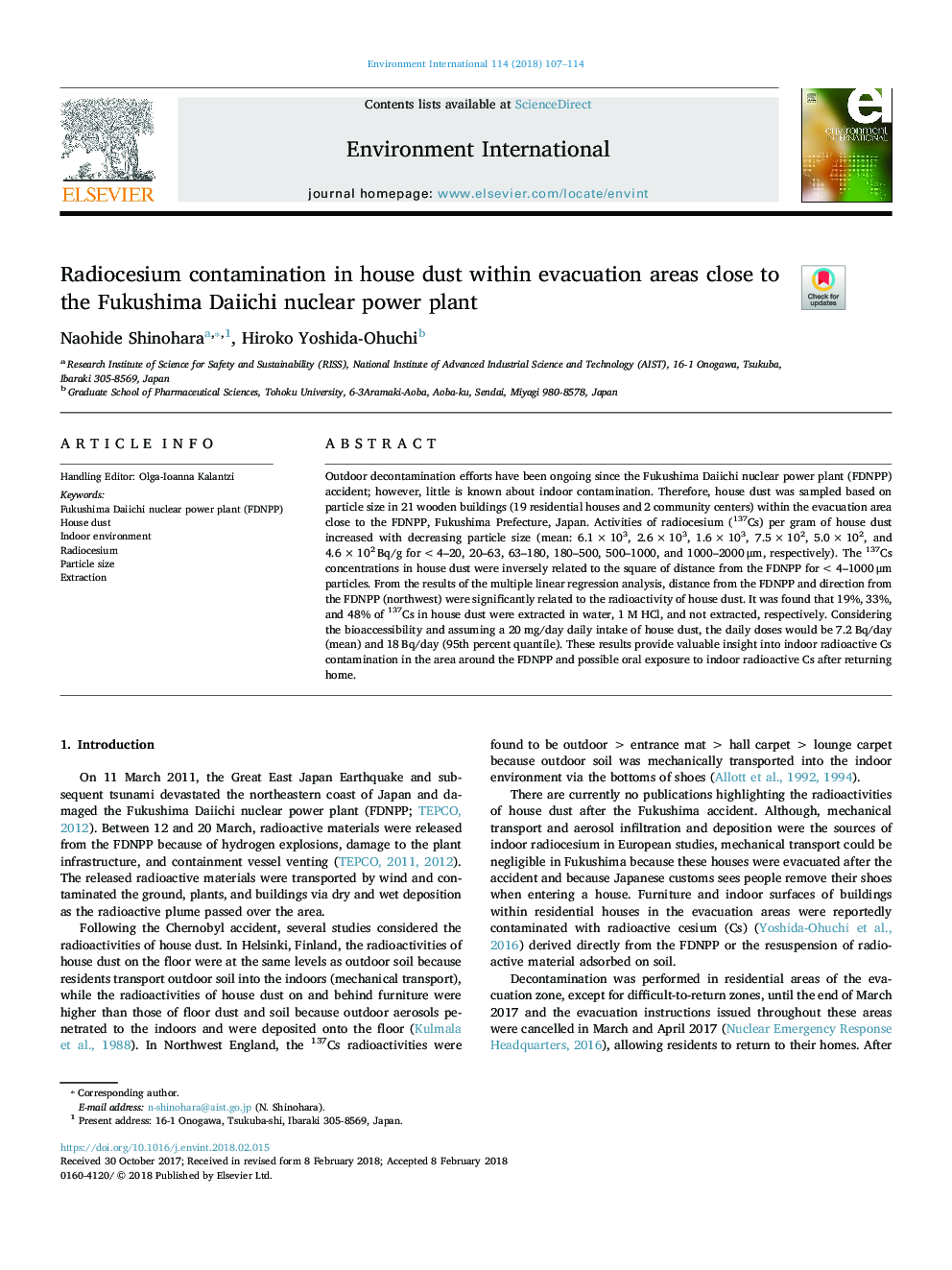| Article ID | Journal | Published Year | Pages | File Type |
|---|---|---|---|---|
| 8855336 | Environment International | 2018 | 8 Pages |
Abstract
Outdoor decontamination efforts have been ongoing since the Fukushima Daiichi nuclear power plant (FDNPP) accident; however, little is known about indoor contamination. Therefore, house dust was sampled based on particle size in 21 wooden buildings (19 residential houses and 2 community centers) within the evacuation area close to the FDNPP, Fukushima Prefecture, Japan. Activities of radiocesium (137Cs) per gram of house dust increased with decreasing particle size (mean: 6.1â¯Ãâ¯103, 2.6â¯Ãâ¯103, 1.6â¯Ãâ¯103, 7.5â¯Ãâ¯102, 5.0â¯Ãâ¯102, and 4.6â¯Ãâ¯102â¯Bq/g for <4-20, 20-63, 63-180, 180-500, 500-1000, and 1000-2000â¯Î¼m, respectively). The 137Cs concentrations in house dust were inversely related to the square of distance from the FDNPP for <4-1000â¯Î¼m particles. From the results of the multiple linear regression analysis, distance from the FDNPP and direction from the FDNPP (northwest) were significantly related to the radioactivity of house dust. It was found that 19%, 33%, and 48% of 137Cs in house dust were extracted in water, 1â¯M HCl, and not extracted, respectively. Considering the bioaccessibility and assuming a 20â¯mg/day daily intake of house dust, the daily doses would be 7.2â¯Bq/day (mean) and 18â¯Bq/day (95th percent quantile). These results provide valuable insight into indoor radioactive Cs contamination in the area around the FDNPP and possible oral exposure to indoor radioactive Cs after returning home.
Related Topics
Life Sciences
Environmental Science
Environmental Chemistry
Authors
Naohide Shinohara, Hiroko Yoshida-Ohuchi,
